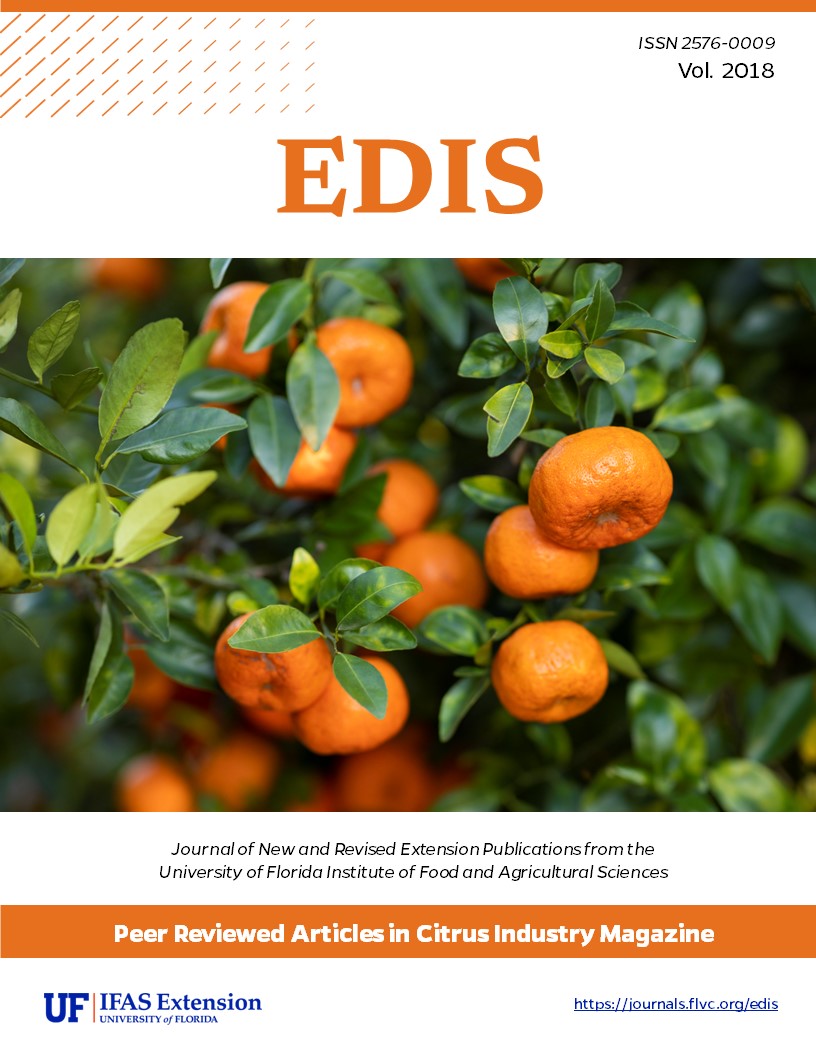Abstract
In Florida, the major portion of rainfall occurs from June through September. However, rainfall is scarce during the dry period from February through May, which coincides with the critical stages of bloom, leaf expansion, fruit set and fruit enlargement. Irrigation provides water when rainfall is not sufficient or timely to meet crop needs.
Adequate irrigation management is key to optimize water use, increase crop yield and improve fruit quality. Several weather-, soil- and plant-based methods are available for irrigation management. The most used methods rely on weather stations to calculate evapotranspiration (ET), the combination of water lost by plant transpiration and soil evaporation.
References
Kadyampakeni D.M., K.T. Morgan, M. Zekri, R.S. Ferrarezi, A.W. Schumann and T.A. Obreza. 2017. Irrigation Management of Citrus Trees. In: M.E. Rogers, M.M. Dewdney and T. Vashisth (Eds) 2017-2018 Florida Citrus Production Guide. p. 49-52.
Schumann, A. and L. Waldo. 2017. Understanding soil moisture sensor data. Citrus Industry, p. 6-11.

